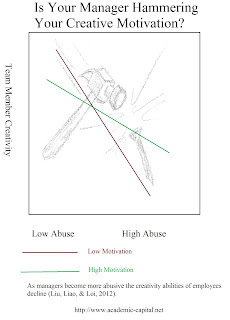Satisfied employees have developed
strong social relationships with their leaders and the organization. They
understand and communicate well with their supervisors and have a personal
connection to them on an interpersonal level. Through these positive
relationships employees will feel positive affectivity toward their employer
which leads to higher levels of performance. When employees enjoy their work
and their working relationships they have developed higher levels of
organizational commitment, enhanced motivation, and are less likely to leave an
organization.
Relationships between employee
satisfaction and communication are often related to how employees feel toward
their job and other employees. Job satisfaction is associated with higher
levels of commitment and lower turnover intentions (Yucel, 2012). Employees who
feel the organization provides significant meaning to their lives and are
satisfied with their employment opportunities have more commitment than those
who don’t.
Naturally, people want to enjoy the
work they engage in and the people they talk to on a daily basis. When they do
feel a positive association to the organization and its members they naturally
will desire to put forward more effort based in the positive affectivity and a
sense of loyalty to their social group members. It is often these social
relationships that make all the difference in successful and unsuccessful
companies.
Employment satisfaction doesn’t
exist in a bottle. It often comes with other concepts that include leadership,
engagement, and ethical standards (Munir, et. al., 2013). Engagement can be seen
as moving above and beyond the requirements of one’s position to fulfill
additional responsibilities. Ethical standards become a medium of activity,
leadership prompts the behavior, and engagement determines the pathway for benefits.
It is hard to connect with the
organization is there is not some level of ethical medium that applies to all
members equally. When employees are unsure of how relationships within the
organization impact their employment opportunities because ethical standards
are lower they will be more cautious about who they talk to and what they talk
about. When employees stop relating to each other or their management team the
result will be lower satisfaction, lower motivation, and even lower
performance.
Job satisfaction is also influenced
by the relationships between leaders and followers. According to Han and Jakel
job satisfaction had a mediating relationship between leader-member exchange
and turnover (2011). The more leaders and managers talked with and engaged
their employees the higher the job satisfaction and the lower the turnover
rates.
Great bosses are not only liked but
also respected. They don’t need to be the employee’s best friend but they
should have positive relationships that allow for openness of communication.
They should also be seen as ethical, fair, and trustworthy. Employees will
still engage with bosses that have high standards as long as they trust the judgment
of that boss and have a personal connection to him or her.
Developing employee satisfaction has
multiple benefits for an organization that includes reduced costs, higher
levels of performance, and a stronger commitment to organizational success.
This satisfaction is influenced by the nature of employee’s relationships,
perceptions of ethical and fair treatment, engagement with the leadership team
and the way in which employees make meaning of their place within the group.
Tips for Managers:
-Have a positive disposition when
talking with employees.
-Develop strong ethical and moral
norms within the organization.
-Encourage openness with employees.
-Raise expectations and performance ideals.
-Encourage and praise positive
performance that goes beyond requirements.
-Help employees understand the
importance of their job.
-Offer opportunities for growth.
Han, G. & Jekel, M. (2011). The
mediating role of job satisfaction between leader-member exchange and turnover
intentions. Journal of Nursing
Management, 19 (1).
Munir, et. al. (2013). Empirical
investigation of ethical leadership, job turnover, job satisfaction,
organizational commitment, and organizational citizenship behavior. Far East Journal of Psychology &
Business, 10 (2).
Yucel, I. (2012). Examining the
relationships among job satisfaction, organizational commitment, and turnover
intention: an empirical study.
International Journal of Business & Management, 7 (2).
